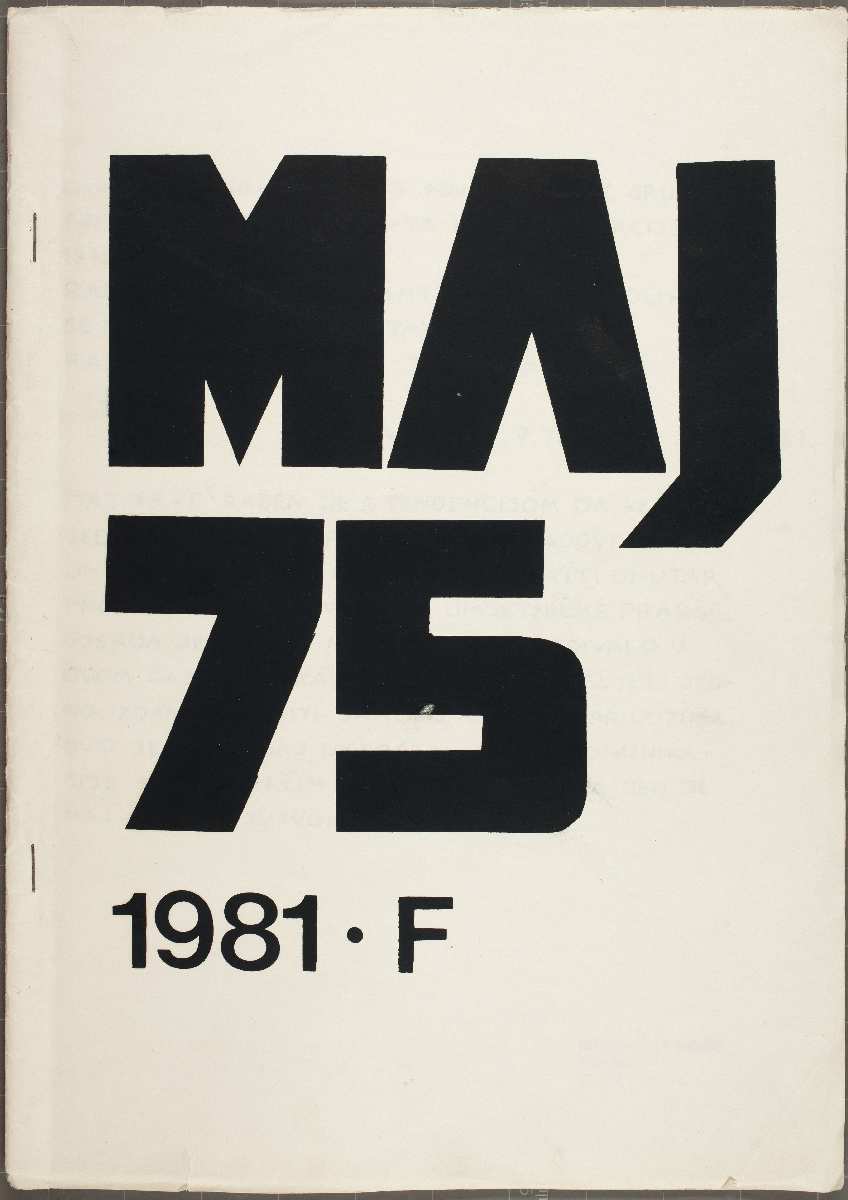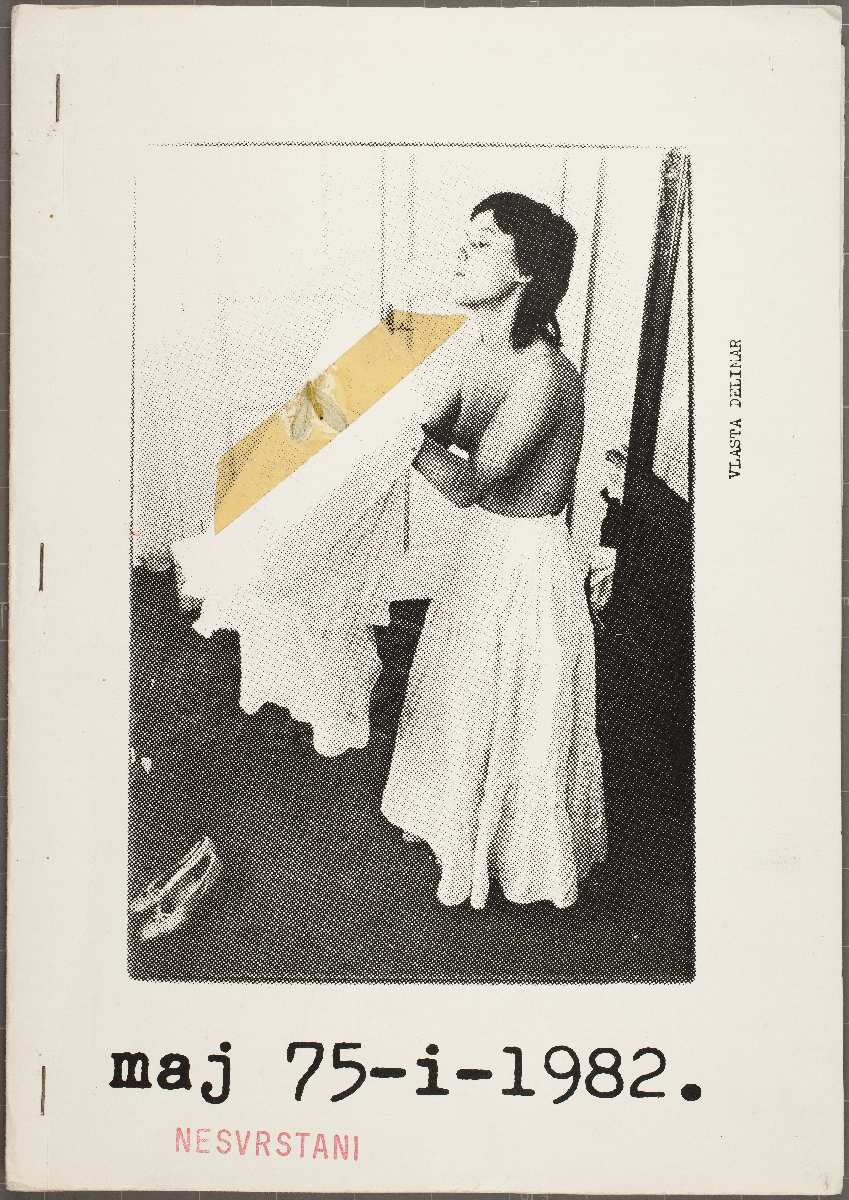Armin Medosch: New Tendencies: Art at the Threshold of the Information Revolution, 1961–1978 (2016)
Filed under book | Tags: · art history, computer art, conceptual art, cybernetics, neo-avant-garde, new art practice, new tendencies, non-aligned movement

“New Tendencies, a non-aligned modernist art movement, emerged in the early 1960s in the former Yugoslavia, a non-aligned country. It represented a new sensibility, rejecting both Abstract Expressionism and socialist realism in an attempt to formulate an art adequate to the age of advanced mass production. In this book, Armin Medosch examines the development of New Tendencies as a major international art movement in the context of social, political, and technological history. Doing so, he traces concurrent paradigm shifts: the change from Fordism (the political economy of mass production and consumption) to the information society, and the change from postwar modernism to dematerialized postmodern art practices.
Medosch explains that New Tendencies, rather than opposing the forces of technology as most artists and intellectuals of the time did, imagined the rapid advance of technology to be a springboard into a future beyond alienation and oppression. Works by New Tendencies cast the viewer as coproducer, abolishing the idea of artist as creative genius and replacing it with the notion of the visual researcher. In 1968 and 1969, the group actively turned to the computer as a medium of visual research, anticipating new media and digital art.
Medosch discusses modernization in then-Yugoslavia and other nations on the periphery; looks in detail at New Tendencies’ five major exhibitions in Zagreb (the capital of Croatia); and considers such topics as the group’s relation to science, the changing relationship of manual and intellectual labor, New Tendencies in the international art market, their engagement with computer art, and the group’s eventual eclipse by other “new art practices” including conceptualism, land art, and arte povera. Numerous illustrations document New Tendencies’ works and exhibitions.”
Based on 2012 dissertation from Goldsmiths, University of London.
Publisher MIT Press, 2016
Leonardo series
ISBN 9780262034166, 0262034166
x+395 pages
Reviews: Oliver Schürer (Versorgerin, 2016, DE), Paula Barreiro López (Critique d’art, 2016, FR), Kristian Lukić (Furtherfield, 2017), Tomáš Glanc (Tech & Culture, 2017), Adair Rounthwaite (Art Bulletin, 2018), Adair Rounthwaite (Art Bulletin, 2018), Ivana Bago (ARTMargins, 2019).
HTML
PDF (added on 2022-10-11)
Kynaston L. McShine (ed.): Information (1970)
Filed under catalogue | Tags: · art, conceptual art, institutional critique

Catalogue for an exhibition curated by Kynaston McShine and held at MoMA in New York between 2 July-20 September 1970.
The exhibition presented videos and installations by 100 American and European artists (e.g. Vito Acconci, Art & Language, Daniel Buren, Jan Dibbets, Hans Haacke, Dennis Oppenheim, Edward Ruscha, Robert Smithson, or Jeff Wall). It included an early example of dealing with publicly accessible archives within the context of an exhibition and some of the participating artists confronted the issues of political and media based contents: Haacke established MoMA Poll as a first link between the areas of politics and the museum by presenting an open poll on the way the Rockefeller family acted with regard to Nixon’s plans in Indochina.
Publisher Museum of Modern Art, New York, 1970
207 pages
via MoMA
Commentary: Eve Meltzer (Oxford Art Journal, 2006), Interviews with Adrian Piper and Hans Haacke (Doreen Mende, Displayer, 2007), Adam Lauder (2010).
PDF (52 MB)
Comments (2)Maj 75, A–L (1978-84, 1990) [YU]
Filed under artist publishing, catalogue, magazine | Tags: · art, conceptual art, new art practice, yugoslavia


“Maj 75 was an artists’ magazine initiated in 1978 by a group of Zagreb-based artists, the Group of Six Artists (Grupa šestorice autora: painter Boris Demur; photographers Željko Jerman, Sven Stilinović, and Fedor Vučemilović; poet Vlado Martek; and filmmaker Mladen Stilinović), or “a group of friends”, as they refer to themselves in the introductory pages of the magazine. The name of the magazine referred to the date of their first public exhibition. It was conceived as “magazine-catalogue” for their self-organized “exhibition-actions” which ranged from performing and creating installations on city streets and squares to taking trips to the seaside, where they created, performed, and documented work. Comprised solely of pages presenting artworks, the magazine can be viewed as an alternative exhibition space, enabling the artists to communicate their work to the public without the mediation and the sanctioning authority of art institutions and curators. Between 1978 and 1984, 17 issues were published (identified by the letters of the Croatian alphabet), with an additional one produced in 1990 and commemoratively titled Ex-Maj. Issue F, edited by Vlasta Delimar, was a women-only issue.” (Source)
“Exhibition venues were fairly limited for artists so the pages of Maj 75 became an alternative space for not only the Group of Six, but also an extended circle of Yugoslavian and other Eastern European artists, to produce and disseminate their work publicly. Artists such as Vlasta Delimar, Tomislav Gotovac, Sanja Iveković, Mangelos, Balint Szombathy, Raša Todosijević and Goran Trbuljak are a few examples of the many contributors during the history of publication. The magazine was printed in the studio of Vlasta Delimar and Željko Jerman.” (Source)
Published in Zagreb, 1978-84, 1990
via Digitizing Ideas
Commentary: Darko Šimičić (2003), Gwen Allen (2011), MoMA.org (2011), Ivana Bago (c2014).
Comment (0)
